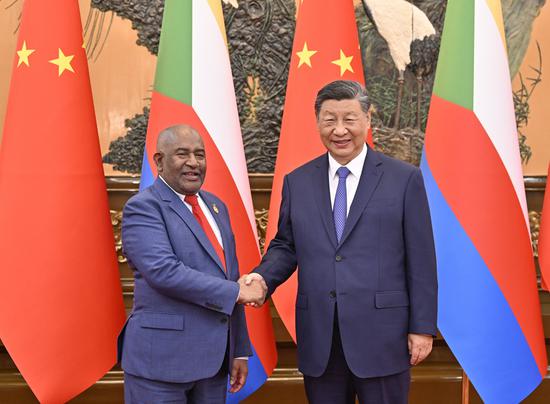Crucial support
For decades, the STA has been instrumental in fostering scientific collaboration in areas of basic science such as agriculture, clean energy, public health and the environment. It has provided U.S. and Chinese researchers with crucial financial, legal and political support, enabling them to work together on groundbreaking research and innovations.
Dasher emphasized the interconnected nature of the global scientific community and the importance of collaboration.
"There's a continuum between basic research and actual commercialization, and certainly in the basic research area, there's always cooperation potential, just about everywhere," he said. "And you're seeing a lot of papers written jointly between people in China and in the United States."
The agreement has contributed to a rapid increase in both the number and quality of joint papers by Chinese and U.S. researchers. However, in recent years, research collaboration has declined, attributed to rising tensions and anti-China sentiment.
A study published by the National Bureau of Economic Research in June showed that scientific cooperation between the U.S. and China had drastically decreased since 2016 when the former U.S. president, Donald Trump, took office.
The study analyzed data in three key areas: STEM (science, technology, engineering and mathematics) trainee mobility, use of scientific works between scientists in each country, and scientist productivity in each country as measured by the production of peer-reviewed papers.
Between 2016 and 2019, ethnically Chinese graduate students were 16 percent less likely to attend a U.S.-based PhD program. Moreover, those who did attend such programs were 4 percent less likely to stay in the U.S. after graduation, the study found.
Output drops
The researchers also documented a sharp decline in Chinese use of U.S. science as measured by citations, although they found no such decline in the propensity of U.S. scientists to cite Chinese research.
The trends are corroborated by the State of the Science address delivered by U.S. National Academy of Sciences President Marcia McNutt in June.
McNutt presented data showing that the U.S. is dropping in research output as measured by articles published, while China is experiencing a triple-digit percentage increase. In terms of research quality, measured by the percentage of articles in the top 1 percent cited, the U.S. is losing ground while China has moved ahead of the European Union.
The shifting landscape of scientific productivity is also reflected in the pharmaceutical industry. China's share of drugs in phase one to three trials has risen dramatically from about 3 percent in 2013 to 28 percent in 2021, while the U.S. share is in decline, according to McNutt.
China's number of patents per year surpassed the U.S. around 2015 and is now leading by a ratio of 2 to 1 as of 2021.
In the corporate world, China has emerged as a dominant force, leading the Global Fortune 500 list with 142 out of 500 companies in 2023, a stark contrast to its nonplayer status in 2000.
Those statistics underscore McNutt's conclusion that advancing the frontiers of basic research now requires international partnerships to benefit all researchers.


















































 京公网安备 11010202009201号
京公网安备 11010202009201号